The Marcilio Dias or “M class” were the first modern destroyers built in Brazil, at Ilha das Cobras shipyard, Rio de Janeiro, and based on the US Mahan class. They were completed after many delays in 1943, after seven years in construction but they did take part actively in WW2, notably to escort convoys in the western south Atlantic unlike the next six Acre class laid down in 1940 but completed in 1949-1951. Modernized in the early 1960s, they were decommissioned in 1966 and 1972 with a relatively uneventful career. They were replaced themselves by modernized Fletcher class ships, the Pará-class destroyers.
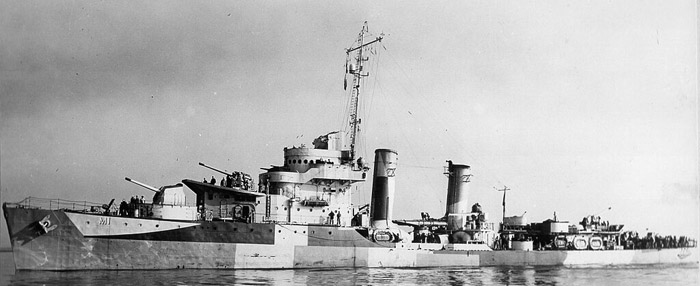
Photo by the Diretoria do Patrimônio Histórico e Documentação da Marinha (DPHDM), CC
Development and Context
Brazilian Destroyers caught in an old rivalry
The Brazilian Navy always saw herself as the leader in maritime matters in South America, despite it was contested by both Argentina and Chile. The souvenir of past arms race initiated once by the purchase of 1880s Ironclads (Riachuelo class) and in 1912 by the acquisition of the first dreadnought outside Britain, the Minas gerais class contributed to this image. The Navy was hit badly by the hardships of the interwar and even a civil war, the Paulista war, the Lieutenants Revolts (1922–27) and the effects of other 1929 crisis crippled the Navy’s budget and plans.
In 1936, the Brazilian navy had still her two Minas Gerais and Sao Paulo, modernized to some extent in 1932, the 1908 Bahia class cruisers, and same generation Para class destroyers which were modified River class. But these were a 1902 design built in 1908, the first destroyers actually built in Rio de Janeiro shipyard, ten of them. Some were removed from service in 1931, the Amazonas and later in 1933, para and Parana. At 650 tonnes, they were merely considered as “torpedo boats” for 1936 standards.
Since 1920 there was also the former British Acasta-class destroyer built 1912–1913, renamed Maranhao which was more capable although still light (850t). So the Brazilian destroyer force was reduced in 1936 to eight destroyers of dubious value.
The Marinha do Brazil’s admiralty was perfectly aware this was not adequate, especially since Argentina ordered two destroyers to Spain in 1925 (Churucca class) and three to White in Britain (The Mendoza class), launched 1928-29. These were modern 1570t modified Scott class ships. Chile on its side ordered in 1927 six destroyers to Thornycroft, the Serrano class delivered in 1928-29.
Then in 1936 there was a thunderstruck, with the Argentinian order to Britain of yet another class of destroyers, the 1350t Buenos Aires class, modified “G” class destroyers capable of 35 knots and with quadruple TTs, four QF guns. No less than seven ordered to Vickers, cammell Laird and John brown yards, all launched in 1937.
To answer this, it was considered first to built modern destroyers in Rio, and gain experience from a modern design, and then complement this a year after by an order to Britain as well, H class destroyers, all in 1938. The first option started with a search in 1936 for the best destroyer design available at the time for Brazilian needs.
Based on the Mahan class
After much discussions, the admiralty agreed that the US Mahan class destroyers was better suited, especially if they could be armed with US weapons and fore control systems.
The Mahan class had been launched in 1935 and were based on a standard 1450t Washington displacement. The powerplant, many sub-systems, torpedo tubes, fire controls and mains guns were all to be ordered in the US, with adaptations made in the final design process. Negotiations with New York’s Gibbs & Cox and the US Government led to purchasing the plans in 1936, exact date unknown. Once the plans were translated from Imperial to metric, English to Portuguese, Ilha das Cobras submitted the final plans to the admiralty which were approved immediately. Marcilio Dias was ordered first and had her keel laid down on 8 May 1937. Her two sisters followed the same year, month unknown.
It is now generally considered that the Argentinian older designs spurred the construction of the Marcilio Dias class whereas the announcement of the Buneos Aires class led to answer with the Jurunea class. These H class destroyers were ordered in 1938, named Jurunea, Jaguaribe, Japura, Javary, Jurua and Jutahy or J class. While in construction they were appropriated by the Royal navy, which led to order a new, smaller design at Ilha Da Cobras, as soon as the Marcilio Dias were launched, that is in the summer of 1940. This became the Acre class, which due to the war blocking or slowing down delivery armament and sensors were only completed in 1949-51. Although they missed WW2, they brought the total of the Brazilian destroyer force to nine ships, enough to rival the Argentinian Buenos Aires class.
Design of the class
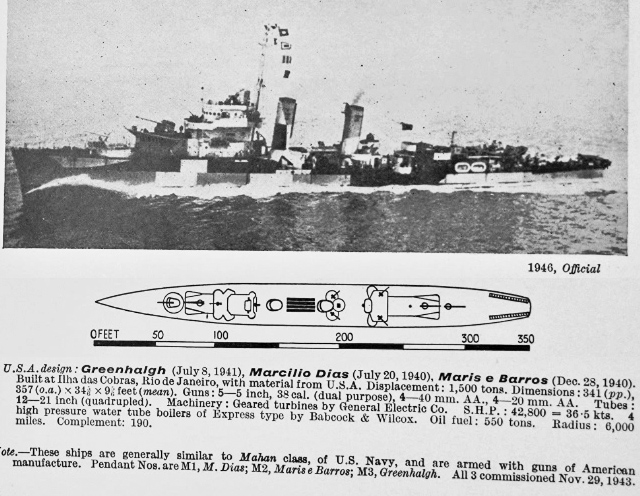
Albeit obtaining the blueprints to built Mahan class destroyers, the “final product” diverged in many ways. There were many elements in design that undoubtely resembled the originals, like the two tall funnels, bridge layout, armament layout and generally fire control and weapons systems. However the final product ended larger and heavier than their US counterparts. The design was also modified during construction and again after delivery.
Hull and general design
The Marcilio Dias class final standard displacement rose to 1,524 tonnes (1,500 long tons), 2,235 t (2,200 long tons) at full load versus 1,500 long tons standard, 1,725 long tons FL.
They were four meters longer at 108.81 metres (357 ft) long overall or 103.94 metres (341 ft) between perpendiculars versus 341 feet 3 inches (104 meters), but narrower at 10.61 metres (34 ft 10 in) versus 35 ft 6 in (10.8m) and with a mean draught of 3.04 m (10 ft) versus 10 feet 7 inches of 3.2 m on the Mahan class. The general hull shape was about the same, with the greater beam 2/3 aft and generous rounded poop, fine prow with moderate angle and flare. General proportions of the forecastle and lower deck, even bulkheads installed aft of the forecastle were adopted, but the lower buoyancy and beam meant they were probably even more unstable than the already criticized Mahans. Some even considered the Mahan had a degraded stability compared to the 1933 Farraguts. The crew was more developed than on the Mahans at 190 officers and ratings versus 158 in peacetime, but coherent to WW2 standards (250 in 1944), with reinforced armament.
Among other things, the original three faceted bridge was modified during contruction to a rounded bridge with portholes more in line with the Fletchers and later prewar US designs.
Powerplant
The powerplant was purchased in the US and strictly followed the original specs. Two shafts were driven by two sets of General Electric Company geared turbines, in turn powered each by a pair of Babcock & Wilcox Express boilers. The engines were rated at 42,800 shaft horsepower (31,916 kW) for a maximum speed of 36.5 knots (67.6 km/h; 42.0 mph). This was less than the Mahans, capable of 46,000 shp (34,000 kW) and 37 knots (69 km/h). They a had capacity for 559 tonnes (550 long tons) of fuel oil however, giving them a comparable range of 6,500 nautical miles (12,038 km; 7,480 mi) at 15 knots (28 km/h; 17 mph).
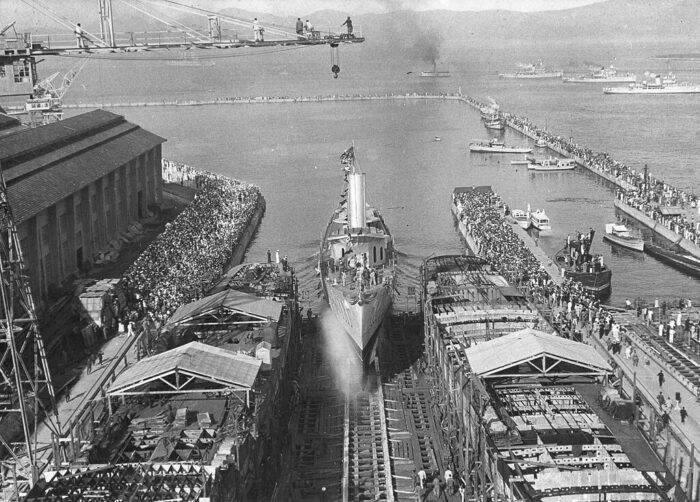
Launch of Mariz e Barros at Isla da Cobras, 20 Dec. 1940
Armament
Choices were made, that late in the war, to barely modify the Mahan armament (five main guns, three quad TT banks), symbolic AA) in a more coherent package. As completed they had the same five single 5 in (127 mm)/38 cal. guns in A,B superfiring positions and X,Y aft superfiring positions but also “Q” in upper aft position like the original. They diverged however by having only two TT banks instead of three, both centerline (which obliged to stretch the hull a bit). But at the time they were completed, Bofors were obtained for the US as well as Oerlikon guns, for a late 1943 final AA armament more in line with modified US destroyers and four 40 mm Bofors guns and four 20 mm guns.
5-in/38 guns Mark 21: More modern mounts than the original Mark 12, with light shields only for the frst two mounts A and B. No shields for the three aft. On photos however, the B mount is often shown without shield. They had the same excellent caliber as the original US ones, and Brazil could count on a generous supply or ammunition during and after the war for these. They were matched with the Mk33 Gun Fire Control System installed on top of their bridge like the original. The Mark 33 used tachymetric target motion prediction completed by the analog computer Mark 10. This was space age for Brazil.
Each mount weighted Weight 42,000 lbs. or 19 tons. MV was 2,600 ft/s (790 m/s) for 127×680mmR 53 to 55 lb (24 to 25 kg), up to 15 rpm, max range 18,000 yards (16,000 m).
Full specs
Torpedo Tubes:
Initially they had two quadruple torpeod tubes banks, to be coupled with the Mark 27 torpedo fire control system and firing probably the Bliss Leavitt MK 8 Mod. 3D fish. It is dubious that the USN would sell its latest and considered state of the art, even secret Mark 15 and its Mark 12 Mod 3 gyro. Like on the original, A mount was located on top of an elevated barbette, not B mount, at deck level. It seems at completion in 1942-43, “B” torpedo Tube banks was removed to make way for more AA. The final design as completed only had thus the A bank remaining. All sources agrees on this. They also agrees on the fact it seems they carried no depht charge thrower or racks initially, albeit this was corrected as Brazil declared war on Germany on August 22, 1942. From then on, the main role of the Brazilian Navy was to counter the threat of U-Boats in its waters and beyond, as oceanic escorts, and so they ended fitted wioth US provided depht charges, for four Depht charge thrower after and two racks at the poop, extact numbers unknown. The DCR or Y guns if standard rae 3 reloads each. The racks had five each. Total was probably around 44 depth charges.
AA armament:
Sources agrees on the armament of four single Bofors and four single Oerlikon AA guns. This was light by 1944 standards but we have to remember that the Luftwaffe was not really a threat in South American waters or even the South Atlantic, but more during the Italian campaign.
Two were located where was situated the main gun “Q” mount aft, removed in exchange of two twin Bofors 40mm/56 Mk 1.2 on sponsoned positions in its place.
The four single 20/70 Mk 4 Oerlikon guns were located in two deck mounts amidships, close to “B” torpedo bank was, and two in front of the bridge, on a platform that was planned from the start in design. It seems in 1944 the total amounted to eight 20 mm AA guns, but it needs confirmation.
Mariz e Barros thus was a bit of an oddball, with A and Z gun mounts, two twin Bofors aftn two Hedgehog forward and still her quad TT bank between funnels.
Sensors
In 1944, so after starting service it is likely their were provided by the USN a set of radars, SPS-4, SPS-6C, and Mk 28 radars for fire control.
They also had a sonar for ASW work: QCR-1 sonar as completed in 1943
From 1962 they had the AN-SQS-11A radar in place.
Modernization
It seems this armament was left unchanged for two decades until 1966. The first two, Greenhalg and Marcilio Dias were decommissioned in 1966 whereas it was decided to modernized the only remaining sister, Mariz e Barros: She lost two 5-in/38 guns, leaving only A mount forward, as well as four 20mm/70 and kept her Bofors. She received a Sea Cat GWS20 SAM (8 Sea Cat) aft and two 2 x 24 178mm Hedgehog ASWRL forward in place of “B” mount. She became the first Brazilian missile destroyer but only as a test platform. The system was later removed and ended on the Allen M. Sumner-class Mato Grosso. She was discarded in 1972.
⚙ specifications |
|
| Displacement | 1,524 t standard, 2,235 t full load |
| Dimensions | 108.81 x 10.61 x 3.04m (357ft x 34 ft 10 in x 10 ft) |
| Propulsion | 2-shaft GE turbines, 4x B&W Express Boilers 42,800 shp |
| Speed | 36.5 knots (67.6 km/h; 42.0 mph) |
| Range | Oil 550t, 6000nm at 15 knots |
| Armament (1944) | 4x 5in/38, 1×4 21-in TTs, 2×2 Bofors 40mm AA, 4-8 20mm AA, 4 DCR, 2 DCT |
| Sensors (1944) | SPS-4, SPS-6C, Mk 28 radars, sonar |
| Crew | 190+ |
Career of the Marcilio Dias Class
The Marcílio Dias being the first warships constructed in Brazil after decades, since the 1908 River class, it took timle to adapt the designs and recreate a working organization in the yard capable to manage all problems related to modern naval construction, notably the new steel welding standards of the US yards and adoption of completely new systems from to to bottom. The new ships were thrice as large as the former Para class, and way more capable for armament and speed. They took a long time to build but at least could be supplied in time by the US before december 1941 for the most critical elements. They obtained radars and extra AA guns as well as other armaments once Brazil was engaged on the allied side in the summer of 1942. For this, all three vessels went to the US before commissioning, at Philadelphia Naval Shipyard for final upgrades (extra AA installed as well as radars, depht charges, sonar, one main gun and one TT bank landed). All three were assigned to Naval Forces North-East which patrolled the South Atlantic.
Each patrol was on average lasting for fourteen days. At first they were directed by the US naval staff headed by Admial King to cconcentrate on intercepting Axis blockade runners still linking with South America. Patrols worked often in concert with US Naval forces as well as a great deal ofcooperation and tactics were adopted at that time. They then swapped on convoy escort duties between Rio de Janeiro, Recife and Trinidad as the blockade runner threat diminished.
The Brazilian contribution to the Atlantic campaign for a start was boosted by eight 170-foot PC-461-class sub chasers supplied in 1942-43 via Lend Lease as well while Brazilian bases opened to USN B-25s, PBY flying boats, Lockheed Hudsons and Venturas. In all they claimed collectively U-164, U-128, U-590, U-513, U-662, U-598, U-199, U-591, U-161, and the Italian Archimede off the coast of Brazil alone, not counting the South Atlantic at large.
Based in Recife they officially integrated Task Force 41.1 centered around the cruiser USS Omaha (CL-4) from February 1944, escort the first contingents of the Brazilian Expeditionary Force to Europe. They made 5 more trips from July 1944, Rio to Gibraltar until January 1945, and so never took part in Mediterranean operations not the Italian campaign.
They also escorted a Marines (Fuzileiros Navais) task force from Rio to Trinidad in early 1945 to relieve U.S. Marines for the Pacific. They were kept with the Northeast Naval Force for escort between Rio de Janeiro to Recife and from Bahia to Freetown as well as actiing in between as weather station and rescue ships for US planes transiting from Africa to America via the Ascension Island, the only possible route outside via Greenland.
The U-boats threat was still present and the destroyers made surrender U-977 after she was expelled of an Argentine port in August 1945. They also looked for survivors of the cruiser Bahia, lost at sea (probably torpedoed) in July 1945.
Next, they escorted back to Brazil the Expeditonary Force, gaining stars and glory in Italy as part of Task Force 27.1.1. Postwar they formed the First Destroyer Flotilla and on their hull were painted new pennants D24, D25, D26 conform to new international standards. They were present in great relgalia when USS Missouri entered Rio in August 1947 with President Harry Truman on board to visit Brazil.
From 1951 they escorted the new Cruisers Barroso and Tamandaré.
They were part of cooperation exercises such as UNITAS, VERITAS, and SPRINGBOARD with the U.S. Navy and other South American fleets. They also watched over the Portuguese Navy off Africa and made goodwill visits from the Cape of Good Hope to the Caribbean, later escorting Brazil’s only aircraft carrier from 1956, Minas Gerais. In 1964-66 Barros was the only one modenrized, with a British Sea Cat missile launcher installed as experimental missile escort, and ended as a training ship whereas her sisters were decommissioned in 1966 and later sold for BU. Barros was decommissioned at last in 1972, replaced by NAeL Marcílio Dias (D25) the ex-USS Henry W. Tucker (DD-875), a Gearing FRAM ship.
 Marcílio Dias
Marcílio Dias

Marcílio Dias (M1) was laid down on 8 May 1937 at Ilha das Cobras, launched on 20 July 1940 and completed on 29 November 1943, official date for the three ships.
 Mariz e Barros
Mariz e Barros

Mariz e Barros (M2) was also laid down in 1937 (date unknown, possibly the same), launched second on 28 December 1940, completed in November 1943.
 Greenhalgh
Greenhalgh
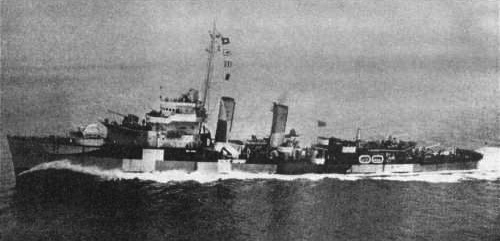
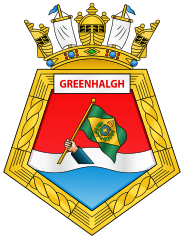 Greenhalgh (M3) was also laid down at Ilha das Cobras in 1937 adn the last launched on 8 July 1941. She was completed in November 1943 officially.
Greenhalgh (M3) was also laid down at Ilha das Cobras in 1937 adn the last launched on 8 July 1941. She was completed in November 1943 officially.
Read More/Src
Books
International Naval Research Organization (INRO), warships Intl.
Chesneau, Roger, ed. (1980). Conway’s All the World’s Fighting Ships 1922–1946. Greenwich, UK: Conway Maritime Press.
Gardiner, Robert; Chumbley, Stephen & Budzbon, Przemysław, eds. (1995). Conway’s All the World’s Fighting Ships 1947–1995.
Whitley, M. J. (2000) 1988. Destroyers of World War Two: An International Encyclopedia.
Links
On laststandonzombieisland.com/
On navypedia.org/
naval.com.br M class
On commons.wikimedia.org
en.wikipedia.org/ Acre-class_destroyer
uboat.net/allies/warships/class/516.html
shipbucket.com rendition of Mariz e Barros in 1969
reddit.com colorized photo
worldnavalships.com brazilian_navy.htm
On facebook.com/
sixtant.net/ mariz-e-barros
the new Marcilio Dias on naval.com.br
Videos


 Latest Facebook Entry -
Latest Facebook Entry -  X(Tweeter) Naval Encyclopedia's deck archive
X(Tweeter) Naval Encyclopedia's deck archive Instagram (@navalencyc)
Instagram (@navalencyc)





 French Navy
French Navy Royal Navy
Royal Navy Russian Navy
Russian Navy Armada Espanola
Armada Espanola Austrian Navy
Austrian Navy K.u.K. Kriegsmarine
K.u.K. Kriegsmarine Dansk Marine
Dansk Marine Nautiko Hellenon
Nautiko Hellenon Koninklije Marine 1870
Koninklije Marine 1870 Marinha do Brasil
Marinha do Brasil Osmanlı Donanması
Osmanlı Donanması Marina Do Peru
Marina Do Peru Marinha do Portugal
Marinha do Portugal Regia Marina 1870
Regia Marina 1870 Nihhon Kaigun 1870
Nihhon Kaigun 1870 Preußische Marine 1870
Preußische Marine 1870 Russkiy Flot 1870
Russkiy Flot 1870 Svenska marinen
Svenska marinen Søværnet
Søværnet Union Navy
Union Navy Confederate Navy
Confederate Navy Armada de Argentina
Armada de Argentina Imperial Chinese Navy
Imperial Chinese Navy Marinha do Portugal
Marinha do Portugal Mexico
Mexico Kaiserliche Marine
Kaiserliche Marine 1898 US Navy
1898 US Navy Sovietskiy Flot
Sovietskiy Flot Royal Canadian Navy
Royal Canadian Navy Royal Australian Navy
Royal Australian Navy RNZN Fleet
RNZN Fleet Chinese Navy 1937
Chinese Navy 1937 Kriegsmarine
Kriegsmarine Chilean Navy
Chilean Navy Danish Navy
Danish Navy Finnish Navy
Finnish Navy Hellenic Navy
Hellenic Navy Polish Navy
Polish Navy Romanian Navy
Romanian Navy Turkish Navy
Turkish Navy Royal Yugoslav Navy
Royal Yugoslav Navy Royal Thai Navy
Royal Thai Navy Minor Navies
Minor Navies Albania
Albania Austria
Austria Belgium
Belgium Columbia
Columbia Costa Rica
Costa Rica Cuba
Cuba Czechoslovakia
Czechoslovakia Dominican Republic
Dominican Republic Haiti
Haiti Hungary
Hungary Honduras
Honduras Estonia
Estonia Iceland
Iceland Eire
Eire Equador
Equador Iran
Iran Iraq
Iraq Latvia
Latvia Liberia
Liberia Lithuania
Lithuania Mandchukuo
Mandchukuo Morocco
Morocco Nicaragua
Nicaragua Persia
Persia San Salvador
San Salvador Sarawak
Sarawak Uruguay
Uruguay Venezuela
Venezuela Zanzibar
Zanzibar Warsaw Pact Navies
Warsaw Pact Navies Bulgaria
Bulgaria Hungary
Hungary

 Bundesmarine
Bundesmarine Dutch Navy
Dutch Navy Hellenic Navy
Hellenic Navy Marina Militare
Marina Militare Yugoslav Navy
Yugoslav Navy Chinese Navy
Chinese Navy Indian Navy
Indian Navy Indonesian Navy
Indonesian Navy JMSDF
JMSDF North Korean Navy
North Korean Navy Pakistani Navy
Pakistani Navy Philippines Navy
Philippines Navy ROKN
ROKN Rep. of Singapore Navy
Rep. of Singapore Navy Taiwanese Navy
Taiwanese Navy IDF Navy
IDF Navy Saudi Navy
Saudi Navy Royal New Zealand Navy
Royal New Zealand Navy Egyptian Navy
Egyptian Navy South African Navy
South African Navy






























 Ukrainian Navy
Ukrainian Navy dbodesign
dbodesign